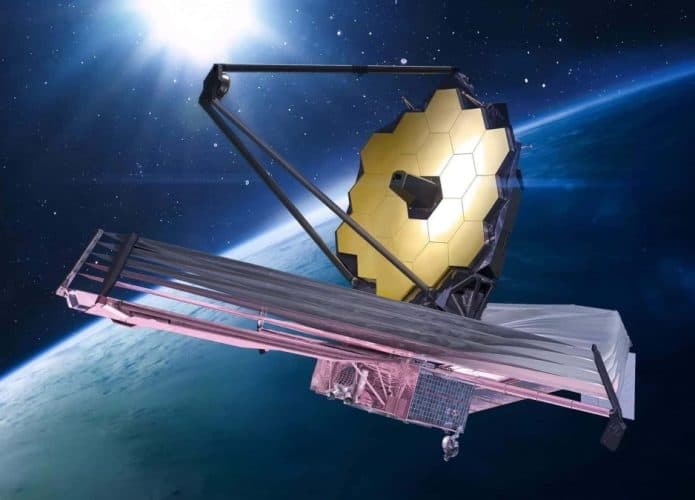Scientists, using the James Webb Space Telescope, have discovered unexpected activity in the Kuiper Belt region, located outside the known planets in the solar system. This region, known to contain icy worlds such as the dwarf planet Pluto, is characterized by millions of frozen objects that were previously considered “dead.”
For those in a hurry:
- The James Webb Space Telescope has revealed unexpected chemical activity in Kuiper Belt objects, suggesting that these icy celestial bodies, including Eris and Makemake, may be more dynamic than previously thought;
- Research suggests that the frozen methane on the surface of Eris and Makemake has recently metamorphosed, indicating the presence of hot interiors that could expel liquids or gases to the surface, contradicting the view that they are simple icy relics;
- The presence of hot cores and the possible existence of oceans under the icy crusts of these bodies raises the hypothesis of conditions suitable for life, similar to the icy moons of the solar system, although there is no evidence for this yet.
- The results encourage the idea of future missions to the Kuiper Belt, suggesting that these icy worlds have active geological features and are possibly habitable.
The James Webb Space Telescope, operating nearly two million kilometers from Earth, has been used to observe Kuiper Belt objects, revealing that these celestial bodies may not be as inert as previously thought. The telescope, equipped with specialized cameras, focused on the two largest known objects in the belt, Eris and Makemake.
Read more:
An unexpected discovery
Christopher Glenn, a scientist at the Southwest Research Institute, led the research published in the scientific journal Icarus. The investigation discovered signs of chemical activity in the icy bodies, contradicting previous belief that they were primitive and unchanged relics of the early solar system.
The results showed that the frozen methane on the surfaces of Iris and Makemake had recently been “cooked.” This indicates the presence of hot interior spaces capable of pushing liquids or gases to the surface. These results suggest that there may be oceans beneath icy crusts, similar to icy moons like Europa, which orbit Jupiter.
Glenn highlighted that these hot cores could be sources of liquid water beneath icy surfaces. This raises the fascinating possibility that such icy worlds, located billions of kilometers from Earth, could harbor the right conditions for life to evolve. However, there is no evidence of this yet.
Next steps
The results suggest that a mission to these cosmic frontiers could be valuable. NASA's New Horizons mission to Pluto has already revealed a complex world with diverse terrain, characterized by glaciers and water icebergs.
Glenn concludes that in light of these discoveries, the Kuiper Belt is revealing itself to be far more dynamic than previously imagined, with worlds with active geological features. He suggests that it is not too early to start thinking about sending a space probe to explore another of these celestial bodies. He points out that we will be surprised by the wonders that await us.

“Hardcore beer fanatic. Falls down a lot. Professional coffee fan. Music ninja.”

:strip_icc()/s04.video.glbimg.com/x720/12558911.jpg)
/https://i.s3.glbimg.com/v1/AUTH_bc8228b6673f488aa253bbcb03c80ec5/internal_photos/bs/2024/S/2/iTU85sR667zK6K37G07Q/gettyimages-1575367516.jpg)




More Stories
“Very convincing,” says patient duped by fake doctor who paid R$450 for private consultation in Maceió | Alagoas
The ozone layer: Why heatstroke affects animals and plants in Antarctica
Opening of the 5th CNCTI Central-West Conference on Community Mobilization and Science, Technology and Innovation Sector — Ministry of Science, Technology and Innovation